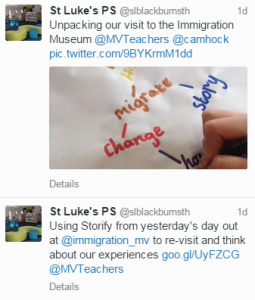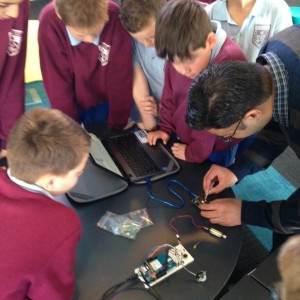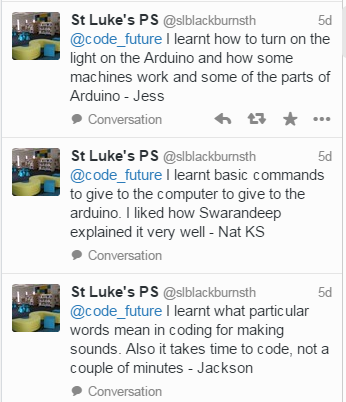I have never been a greatly confident public speaker. I can deliver conversational workshop training sessions with ease and actually enjoy this process. As the recipient of the DLTV Teacher Award 2015, I was ‘privileged’ to be offered the opportunity to speak at this years conference. I can say that I am glad I gave it a go, but will not be giving up by day job. I was nervous and my delivery was not as good as I had hoped but thankfully, I think the message I wanted to convey was delivered. I have had numerous conversations since about the subject matter that seemed to connect to many. For that I am grateful.
The following is an edited text of one element of my DLTV Conference (Digicon15) keynote. I was inspired to share it after reading Steve Brophy’s post on creating a digital footprint .
As teachers, we all know how powerful stories are.
Stories can enrapture you, can inform you, and they play a vital role in passing on our culture and history.
Stories are all around us, in our personal and professional lives. In our personal and professional lives are we ensuring our legacy is continued?
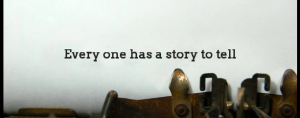
Are we leaving evidence of our thoughts? In particular, I wonder about how we share stories and what artefacts we are leaving behind to remind others of our story. Nowadays, we have an online story as well as a face to face one. We are creating and recording history in megabytes in the way we used to create with pen and paper.
So let’s start on a personal level. What is your story? Where do you come from? Who has shaped you?
What evidence do you keep of your personal story? Do you have old photo albums? pictures on the wall?
Do you have a special place where you keep cards and letters from people in your past?
Most of us have photo albums or framed pictures on the wall. If we turn them over, we might be lucky enough to find that someone took the time to leave some notes, share some facts … who is there? where was it? Were they celebrating a special event ?
My sentimentality for such artefacts of my family story has been raised recently whilst packing up my family home. Forty seven years of story…the house I grew up in. In cupboards, on the walls and in the computer there are elements of my story everywhere.
I count myself as extraordinarily lucky to be the recipient of a wonderful archive of the past in the form of photos, letters and even in written story form. My mum was in fact, a curator, she created a collection, a collection of memories that will last beyond her in this world, a collection that will explain to her children, her grandchildren and future generations who she was, where she lived, what she looked like and most importantly what she thought.
She produced a manuscript detailing her own story as well as passing on the baton of family stories shared with her. There are diaries from her travels with tickets and memorabilia pasted in to embellish the records. In the cupboards, are letters, photographs, Super 8 movie reels and slides in carousels beautifully sorted and labelled.
The letters and cards are tangible, I can sit and browse them whenever I chose. Already the Super 8 film and slides are old technology requiring transfer to other mediums to be available to be easily viewed.
What I realised, last month when I was closing the email account that Mum had been using for the last 10 years (pretty cool for an 87 year old) , was that, with that, was going the correspondence since letter writing was replaced by email. What was once on paper was now just megadata and won’t be accessible unless I take the time to transfer it to some other format and who knows how long that will be relevant.
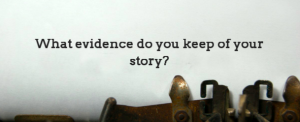
On mum’s computer there were files created in word processing packages that current programs struggle to open. What would have happened if the writers of the past had created their first manuscripts of what we now call classics on programs that were obsolete within less than 10 years?
What happens when our current formats are bypassed for new technologies? I know that our wonderful institutions, museums and libraries are busily digitising resources and storing away relics for future generations but what about our personal stories? Personally, I have scanned many of the slides into digital format, but I wonder will that be long lasting? How long will a jpeg be a digital format? What will be redundant next like the Super8 film is today? I hope I am not sounding too negative here but I would hate to find out too late that we did not prepare and lost important elements of our history. We are the first part of this digital history, no previous generation has left their footsteps in these spaces. Will they last ?
What are creating nowadays that will be our legacy and what tangible evidence will remain after we do? Will our current assets, our evidence of story, our writings on blog posts, our photographs etc be accessible in 10 years let alone 100 years? How will the historians of 2090 access the artifacts we leave behind today?
As I see it, we are leaving much of our legacy in places that are not tangible, not necessarily secure or reliable, and in many cases very disorganised. Think about where your latest photos are of the last family celebration? Will someone in 100 years be able to find it? If we are not writing on the backs of photos anymore, will they know anything about the event? It might be a problem for the app developers to consider but we can each take a bit of responsibility as well.
We are accumulating masses of data – photos in multitudes of online spaces and on our own computers and devices – spaces we ourselves struggle to manage.
Are we making wise choices about what we are keeping? Once upon a time, only the good ones made it into the album or into the frame. It is so easy to accumulate masses of images from one short event, to keep the blurry ones, to have 4 of nearly the same thing. Are we being discerning? or is the world of excess carrying over into this part of our lives as well?
With the plethora of choice in our digital world are we managing our story artefacts in a way that can be accessed or are pieces going to get lost with every closed email account, or redundant app, closed cloud storage facility or even every forgotten password?
I am not sure we have the answers but I hope we are leaving something behind like my mum has done for me.
